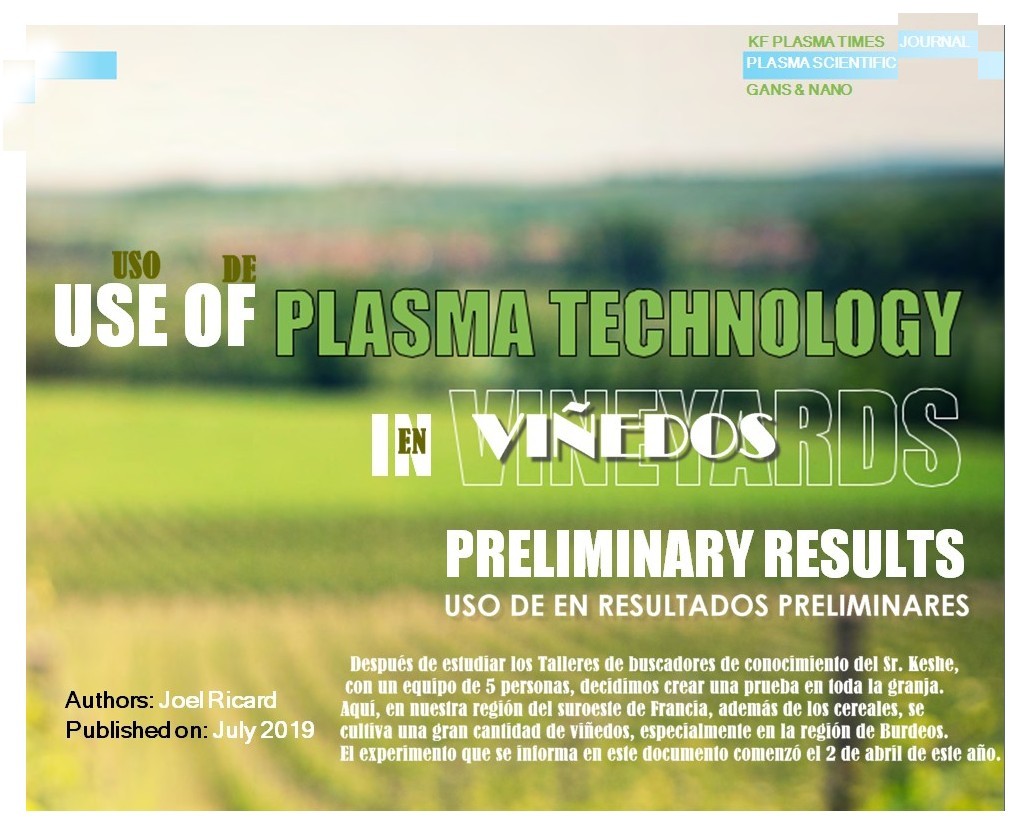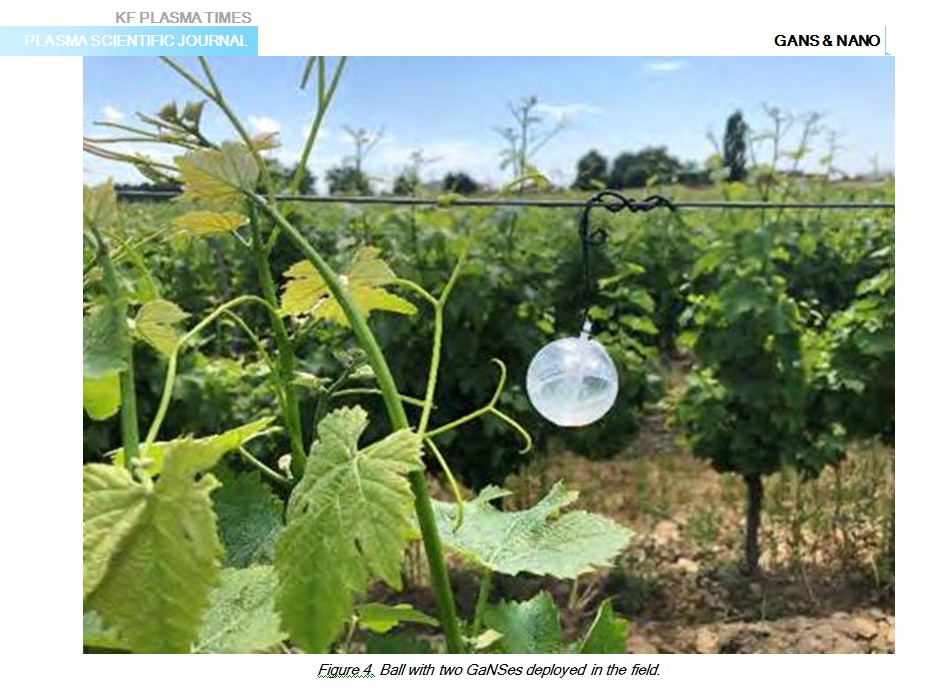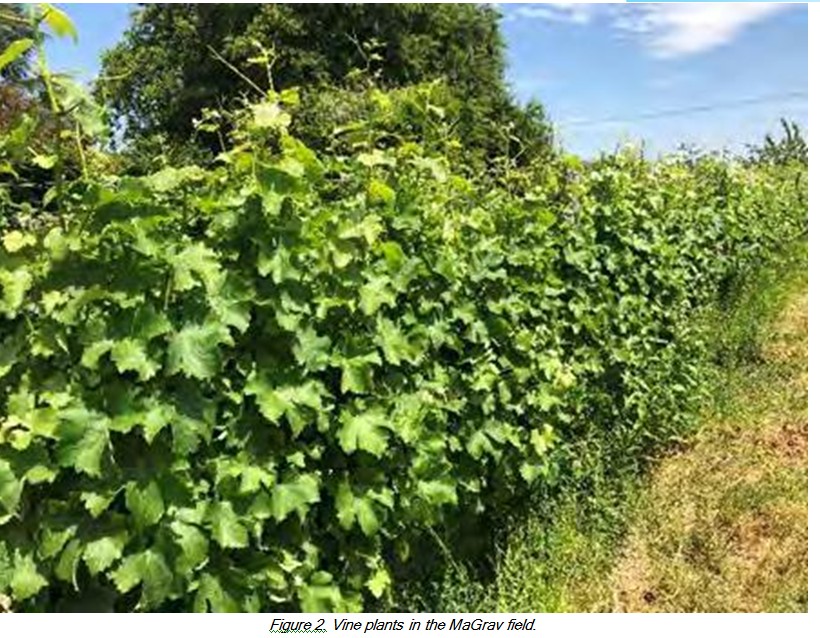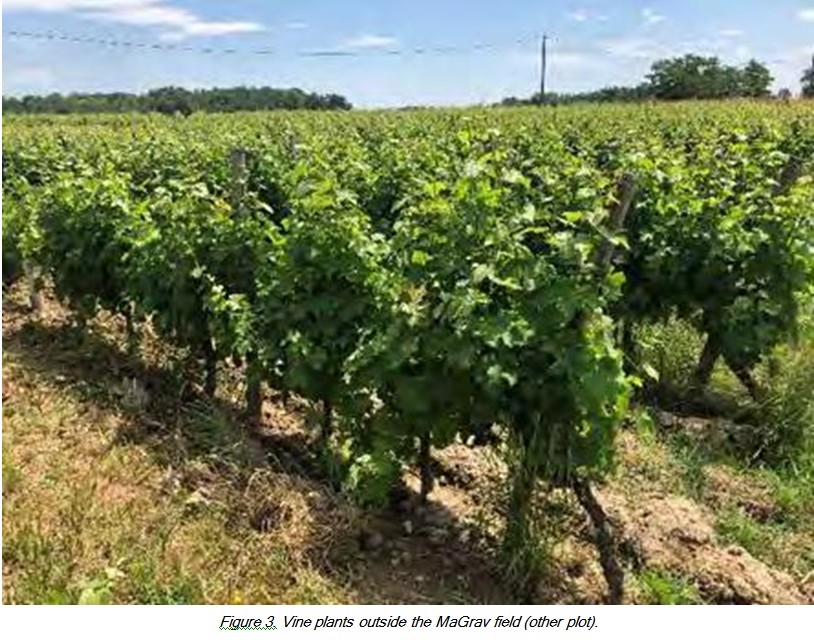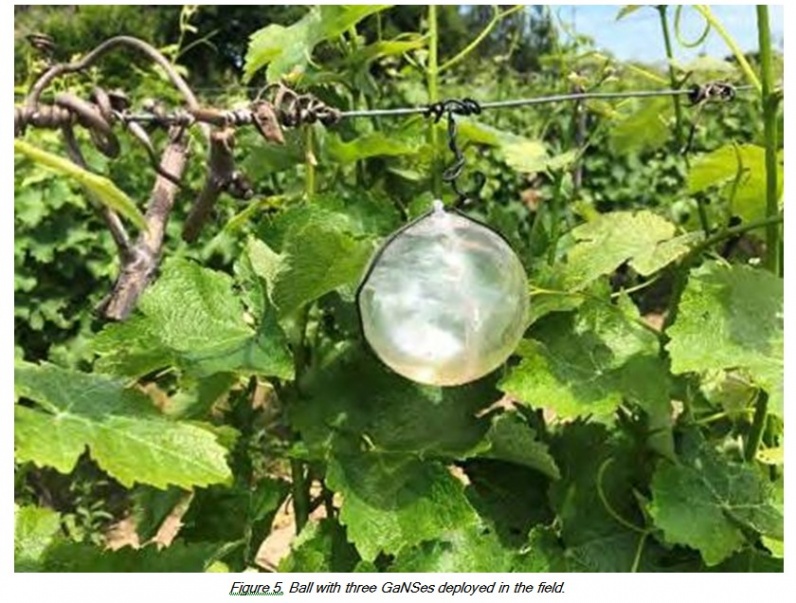Diferencia entre revisiones de «Uso preliminar de la tecnología de plasma en viñedos»
| Línea 1: | Línea 1: | ||
| − | [[:Categoría:KF Plasma Times|KF Plasma Times]][[Archivo: | + | [[:Categoría:KF Plasma Times|KF Plasma Times]] |
| + | [[Archivo:MK.E3.L.jpg|centro|sinmarco|1025x1025px]] | ||
| + | INTRODUCTION | ||
| − | + | After studying Mr. Keshe's Knowledge Seekers Workshops, with a team of 5 people, we decided to create a farm-wide trial. Here, in our region of southwestern France, in addition to cereals, there is a large quantity of vines grown, especially in the Bordeaux region. | |
| − | [[Archivo: | + | The experiment reported on in this paper began on April 2nd of this year. |
| + | |||
| + | We contacted a wine-grower who offered us a test plot without hesitation. We decided to install the agricultural plasma technology on a rectangle of the plot, about 80 meters long and 40 meters wide, contain-ing 230 vine crops. | ||
| + | |||
| + | The rest of the plot, which remained without any intervention on our part, is not subjected to any phytosanitary treatment. | ||
| + | |||
| + | GROWING VINE CROPS WITH PLASMA | ||
| + | |||
| + | DURATION OF THE EXPERIMENT | ||
| + | |||
| + | The vine is a particular plant, with young plants, others that are several decades old, half a century old and older. Like a family! | ||
| + | |||
| + | So we have to study over time the influence of the technology on this whole subtle little world. | ||
| + | |||
| + | It was agreed that we would study throughout the season, from the growth of the vine to the harvest. This test and observations will be repeated over the next two years. | ||
| + | [[Archivo:Kk.lhj.1.jpg|izquierda|sinmarco]] | ||
| + | STUDY OBJECTIVES | ||
| + | |||
| + | The main objectives of this study is to observe the plants and their environment through-out the season, photograph changes, note particularities, date, control sugar levels, polyphenols, etc. | ||
| + | |||
| + | All this is to quantify the improvement in the wine quality and production, and capability to eliminate all phytosanitary treatment processes. | ||
| + | |||
| + | PROCESS | ||
| + | |||
| + | We meshed the surface, each intersection representing a vine stock. The mesh incorpo-rates a range of action from each point of application of the technology. | ||
| + | |||
| + | The technology used is implemented in two phases: | ||
| + | |||
| + | 1. Early April till mid-June – Flexible, reinforced ring filled with GaNS of CO2 at 50% and CuO at 50%. Each ring is completed by a flexible hose twist filled with CH3 GaNS (Fig. 1). | ||
| + | |||
| + | 2. At the end of June, we moved on to the second phase of the test by adding GaNS balls hung at a height of about 1.5 meters (nesting spheres = CO2+CH3 and CH3+CO2+ZnO). | ||
| + | |||
| + | INITIAL CONTEXT | ||
| + | |||
| + | The vines are bare in early April. The wine-grower sowed beans in the rows of vines to bring green manure to the vines (After the growth, the beans are lying down to provide nitrogen to the soil). No treatment is applied. | ||
| + | |||
| + | OBSERVATIONS | ||
| + | |||
| + | 20 days after the rings were placed, the beans that are under the influence of the MaGrav fields have grown considerably compared to those in the other parcels of the property. | ||
| + | |||
| + | 30 days after the vines in the MaGrav field have made their first leaves and the branches are very vigorous and of good size. | ||
| + | |||
| + | At the same time we collect 4 very young vines. | ||
| + | [[Archivo:K.lm.....jpg|centro|sinmarco|936x936px]] | ||
| + | |||
| + | [[Archivo:.l.loluy.jpg|centro|sinmarco|820x820px]] | ||
| + | [[Archivo:.lo.p0.jpg|centro|sinmarco|814x814px]] | ||
| + | [[Archivo:Mjmm7..lo..jpg|centro|sinmarco|796x796px|Figure 5. Ball with three GaNSes deployed in the field.]] | ||
| + | |||
| + | Before planting them, we soaked them for 48 hours in a solution of filtered rainwater and CO2 plasma water. | ||
| + | |||
| + | 45 days after the 4 vines have been in the ground for 12 days. They already have 4 to 5 leaves, the plants of the other plots, planted at the same time, barely start with 2 leaves. | ||
| + | |||
| + | Note that the frost that hit the region for 2 to 3 consecutive nights did not affect the test area, nor the other plots of the property. The beans were laid down to nourish the soil. | ||
| + | |||
| + | Today all the vines under the test and the others on the same plot have grown in the same way. | ||
| + | |||
| + | The neighboring plots have caught up. | ||
| + | |||
| + | However, we notice that the plants in the MaGrav field are stronger and denser (Fig. 2) than the others (Fig. 3). There are no parasites or diseases despite the rainy weather. | ||
| + | |||
| + | The four young vines are still progressing with greater vigor. | ||
| + | |||
| + | We plasmatized (with balls of CO2 and CuO in the tanks) the farm's water tanks to diffuse during watering. | ||
| + | |||
| + | FUTURE WORK | ||
| + | |||
| + | We moved on to the second phase of the test by adding GaNS balls hung at a height of about 1.5 meters (nesting spheres = CO2+CH3 (Fig. 4) and CH3+CO2+ZnO (Fig. 5)). | ||
| + | |||
| + | Drone overflights will allow to follow the evolution by having a global view of the test plot. The test group is currently in good health, without any diseases. | ||
| + | |||
| + | The winegrower expects the plasma-treated grapes to reach maturity much earlier than normal, which is excellent for improving the quality of the wine (the earlier the maturity of the grape bunch arrives, the more the grapes benefit from the sun before harvesting). | ||
| + | |||
| + | More results will be reported on after the harvest. | ||
| + | |||
| + | SPREADING THE PLASMA TECHNOLOGY | ||
| + | |||
| + | We met with the deputy mayor of our town because we want to share this technology with people. | ||
| + | |||
| + | We are in a small village where there is a common garden/farming area - several families grow vegetables for their own consumption. | ||
| + | |||
| + | We have the agreement to implement this technology in the local community, and meeting with local gardeners are scheduled. | ||
| + | |||
| + | GANS & NANO | ||
| + | |||
| + | [[Archivo:Mjjmkl..55.jpg|centro|sinmarco|974x974px]] | ||
Revisión del 22:34 30 jul 2019
INTRODUCTION
After studying Mr. Keshe's Knowledge Seekers Workshops, with a team of 5 people, we decided to create a farm-wide trial. Here, in our region of southwestern France, in addition to cereals, there is a large quantity of vines grown, especially in the Bordeaux region.
The experiment reported on in this paper began on April 2nd of this year.
We contacted a wine-grower who offered us a test plot without hesitation. We decided to install the agricultural plasma technology on a rectangle of the plot, about 80 meters long and 40 meters wide, contain-ing 230 vine crops.
The rest of the plot, which remained without any intervention on our part, is not subjected to any phytosanitary treatment.
GROWING VINE CROPS WITH PLASMA
DURATION OF THE EXPERIMENT
The vine is a particular plant, with young plants, others that are several decades old, half a century old and older. Like a family!
So we have to study over time the influence of the technology on this whole subtle little world.
It was agreed that we would study throughout the season, from the growth of the vine to the harvest. This test and observations will be repeated over the next two years.
STUDY OBJECTIVES
The main objectives of this study is to observe the plants and their environment through-out the season, photograph changes, note particularities, date, control sugar levels, polyphenols, etc.
All this is to quantify the improvement in the wine quality and production, and capability to eliminate all phytosanitary treatment processes.
PROCESS
We meshed the surface, each intersection representing a vine stock. The mesh incorpo-rates a range of action from each point of application of the technology.
The technology used is implemented in two phases:
1. Early April till mid-June – Flexible, reinforced ring filled with GaNS of CO2 at 50% and CuO at 50%. Each ring is completed by a flexible hose twist filled with CH3 GaNS (Fig. 1).
2. At the end of June, we moved on to the second phase of the test by adding GaNS balls hung at a height of about 1.5 meters (nesting spheres = CO2+CH3 and CH3+CO2+ZnO).
INITIAL CONTEXT
The vines are bare in early April. The wine-grower sowed beans in the rows of vines to bring green manure to the vines (After the growth, the beans are lying down to provide nitrogen to the soil). No treatment is applied.
OBSERVATIONS
20 days after the rings were placed, the beans that are under the influence of the MaGrav fields have grown considerably compared to those in the other parcels of the property.
30 days after the vines in the MaGrav field have made their first leaves and the branches are very vigorous and of good size.
At the same time we collect 4 very young vines.
Before planting them, we soaked them for 48 hours in a solution of filtered rainwater and CO2 plasma water.
45 days after the 4 vines have been in the ground for 12 days. They already have 4 to 5 leaves, the plants of the other plots, planted at the same time, barely start with 2 leaves.
Note that the frost that hit the region for 2 to 3 consecutive nights did not affect the test area, nor the other plots of the property. The beans were laid down to nourish the soil.
Today all the vines under the test and the others on the same plot have grown in the same way.
The neighboring plots have caught up.
However, we notice that the plants in the MaGrav field are stronger and denser (Fig. 2) than the others (Fig. 3). There are no parasites or diseases despite the rainy weather.
The four young vines are still progressing with greater vigor.
We plasmatized (with balls of CO2 and CuO in the tanks) the farm's water tanks to diffuse during watering.
FUTURE WORK
We moved on to the second phase of the test by adding GaNS balls hung at a height of about 1.5 meters (nesting spheres = CO2+CH3 (Fig. 4) and CH3+CO2+ZnO (Fig. 5)).
Drone overflights will allow to follow the evolution by having a global view of the test plot. The test group is currently in good health, without any diseases.
The winegrower expects the plasma-treated grapes to reach maturity much earlier than normal, which is excellent for improving the quality of the wine (the earlier the maturity of the grape bunch arrives, the more the grapes benefit from the sun before harvesting).
More results will be reported on after the harvest.
SPREADING THE PLASMA TECHNOLOGY
We met with the deputy mayor of our town because we want to share this technology with people.
We are in a small village where there is a common garden/farming area - several families grow vegetables for their own consumption.
We have the agreement to implement this technology in the local community, and meeting with local gardeners are scheduled.
GANS & NANO
